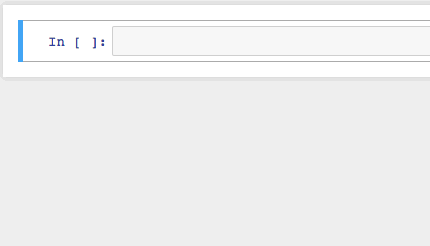This is a pure-Perl 6 implementation of a Perl 6 kernel for Jupyter notebooks.
Jupyter notebooks provide a web-based (or console-based) REPL for running code and serializing input and output.
mybinder.org provides a way to instantly launch a Docker image and open a notebook. Click 'launch binder' above to start this kernel with a sample notebook. (See below for similar alternatives.)
You'll need to install zmq. Note that currently, version 4.1 is recommended by Net::ZMQ (though 4.2 is installed by, e.g. homebrew). If you run into stability issues, you may need to downgrade.
brew install zmq # on OS/X
apt-get install libzmq-dev # on Ubuntu
You'll also want jupyter, for the front end:
pip install jupyter
Finally, install Jupyter::Kernel:
zef install Jupyter::Kernel
At the end of the above installation, you'll see the location
of the bin/ directory which has jupyter-kernel.p6. Make
sure that is in your PATH.
To generate a configuration directory, and to install a kernel config file and icons into the default location:
jupyter-kernel.p6 --generate-config
- Use
--location=XXXto specify another location. - Use
--forceto override an existing configuration.
The jupyter documentation describes the client configuration. To start, you can generate files for the notebook or console clients like this:
jupyter notebook --generate-config
jupyter console --generate-config
Some suggested configuration changes for the console client:
-
set
kernel_is_complete_timeoutto a high number. Otherwise, if the kernel takes more than 1 second to respond, then from then on, the console client uses internal (non-Perl6) heuristics to guess when a block of code is complete. -
set
highlighting_styletovim. This avoids having dark blue on a black background in the console client.
By default a log file jupyter.log will be written in the
current directory. An option --logfile=XXX argument can be
added to the server configuration file to change this.
Start the web UI with:
jupyter-notebook
Then select new -> perl6.
You can also use it in the console like this:
jupyter-console --kernel=perl6
Or make a handy shell alias:
alias iperl6='jupyter-console --kernel=perl6'
-
Autocompletion. Typing
[tab]in the client will send an autocomplete request. Possible autocompletions are:-
methods: after a
.the invocant will be evaluated to find methods -
set operators: after a
(, set operators (unicode and texas) will be shown (note the whitespace before the()). -
equality/inequality operators: after
=,<, or>, related operators will be shown. -
autocompleting
*or/will give×or÷respectively. -
autocompleting
**or a superscript will give you superscripts (for typing exponents). -
the word 'atomic' autocompletes to the atomic operators. (Use
atomic-oratomto get the subroutines with their ASCII names). -
a colon followed by a sequence of word characters will autocomplete to characters whose unicode name contains that string. Dashes are treated as spaces. e.g. :straw will find 🍓 ("STRAWBERRY") or 🥤 ("CUP WITH STRAW") and :smiling-face-with-smiling-eye will find 😊 ("SMILING FACE WITH SMILING EYES")
-
-
All cells are evaluated in item context. Outputs are then saved to an array named
$Out. You can read from this directly or:-
via the subroutine
Out(e.g.Out[3]) -
via an underscore and the output number (e.g.
_3) -
for the most recent output: via a plain underscore (
_).
-
-
Magics. There is some support for jupyter "magics". If the first line of a code cell starts with
#%or%%, it may be interpreted as a directive by the kernel. See EXAMPLES. The following magics are supported:-
#% javascript: return the code as javascript to the browser -
#% html: return the output as html -
#% latex: return the output as LaTeX. Uselatex(equation)to wrap the output in\begin{equation}and\end{equation}. (Or replace "equation" with another string to use something else.) -
#% html > latex: The above two can be combined to render, for instance, the output cell as HTML, but stdout as LaTeX. -
%% bash: Interpret the cell as bash. stdout becomes the contents of the next cell. Behaves like Perl 6's built-inshell. -
%% run FILENAME: Prepend the contents of FILENAME to the contents of the current cell (if any) before execution. Note this is different from the built-inEVALFILEin that if any lexical variables, subroutines, etc. are declared in FILENAME, they will become available in the notebook execution context.
-
-
Comms. Comms allow for asynchronous communication between a notebook and the kernel. For an example of using comms, see this notebook
This blog post provides a tutorial for running this kernel with Docker. This one describes using mybinder.org.
The eg/ directory of this repository has some example notebooks:
-
Definitions of operators are not preserved (see bug 131530).
-
Newly declared methods might not be available in autocompletion unless SPESH is disabled (see tests in this PR).
Suman Khanal
Matt Oates
Timo Paulssen

